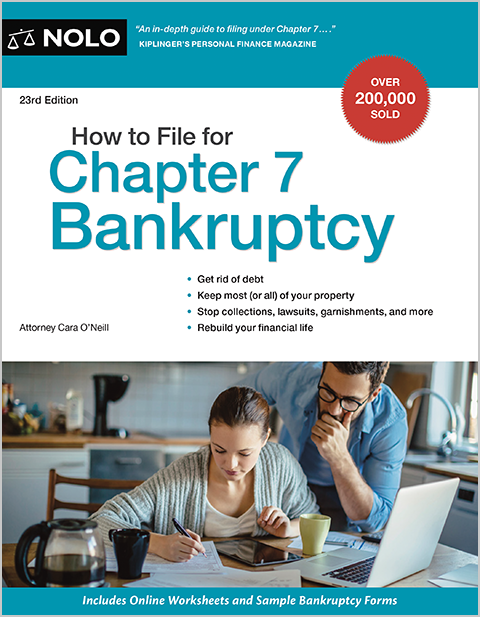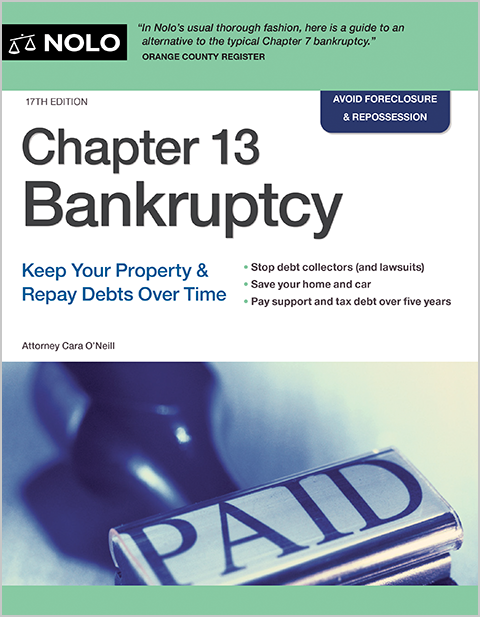Learn about the Chapter 13 bankruptcy trustee's duties in your bankruptcy case.
The Chapter 13 bankruptcy trustee oversees individual Chapter 13 cases for the duration of the three- to five-year plan. Essentially, the trustee acts as a case manager ensuring all procedures and bankruptcy laws are correctly followed and complied with.
Some of the many duties performed by the trustee include reviewing the bankruptcy paperwork, verifying Chapter 13 qualification, assessing the proposed plan for compliance with bankruptcy laws, collecting plan payments and distributing funds to creditors, and otherwise carrying out the terms of the Chapter 13 plan.
Who Is the Chapter 13 Bankruptcy Trustee?
It's the Chapter 13 trustee's job to oversee your matter, and you'll interact primarily with the trustee and the trustee's staff during your case. The bankruptcy court will appoint the Chapter 13 trustee soon after you file and mail a notice with the trustee's contact information.
Who Pays the Chapter 13 Trustee?
The trustee doesn't receive a salary but a percentage of payments sent to creditors. The system rewards trustees who ensure creditors receive all they're entitled to by law, which should put filers on notice that the trustee looks out for creditor interests above filer interests.
Learn more about how Chapter 13 bankruptcy trustees are paid.
What to Expect From the Chapter 13 Trustee
Not hearing from the trustee until the 341 meeting of creditors wouldn't be unusual. However, some trustees provide instructional information early in the process.
For instance, the trustee might require you to upload financial documents to a secure platform. Also, receiving instructions for paying your monthly payments is common because the first payment is due within 30 days of filing.
Most trustees maintain a website with procedural information that proves to be a valuable resource for Chapter 13 filers. Get more tips that can help you survive your Chapter 13 case.
What Does a Chapter 13 Bankruptcy Trustee Do?
The Chapter 13 trustee has many responsibilities. For instance, the trustee could be checking identification one day and arguing motions in court the next. The following steps in a Chapter 13 case describe the more typical interactions between a Chapter 13 filer and the trustee.
1. The Chapter 13 trustee verifies the accuracy of financial disclosures.
The trustee will compare the income, monthly expenses, assets, and debt information in your bankruptcy forms and schedules to your tax returns, paycheck stubs, bank statements, and other financial documents. Some trustees will contact you or your bankruptcy lawyer before the 341 meeting of creditors to resolve a discrepancy, but not always.
2. The Chapter 13 Trustee reviews the Chapter 13 plan
Your proposed Chapter 13 repayment plan outlines how you intend to repay debts, and one of the trustee's tasks is to ensure it's fair to your creditors. Plan problems are typically discussed at the creditors meeting and resolved informally. If you can't reach a consensus, the trustee will file a motion with the bankruptcy court asking for a resolution.
Your creditors can also object to your plan by filing a motion. Either way, you can respond to the motion before the judge makes a decision.
3. The Chapter 13 Trustee Conducts the Meeting of Creditors
You'll attend a Chapter 13 creditors meeting about a month after filing your case. The trustee will review your identification at the hearing unless the meeting is virtual. In that case, you'll likely provide it a day or two before the hearing.
After the trustee places you under oath, you'll answer the trustee's general questions about the accuracy of the petition and if you anticipate receiving additional assets shortly. You'll also respond to any issues the trustee might have with the bankruptcy paperwork, supporting documents, or plan. Your creditors will also have an opportunity to ask questions.
If more information, documentation, or investigation is needed, the trustee will continue the meeting to another date. Otherwise, the trustee will conclude the meeting. Find out what happens after the creditors meeting.
4. The Chapter 13 Trustee Manages Your Bankruptcy
You'll interact with the trustee and the trustee's office staff for the case's duration. Most bankruptcy filers rarely see a bankruptcy judge during the case. For instance, if you have a problem making a payment, you or your bankruptcy lawyer will want to contact the trustee to see if alternate arrangements can be made. Learn about the options available when you can't make your Chapter 13 payment.
5. The Chapter 13 Trustee's Role at the Confirmation Hearing
The trustee will attend the confirmation hearing and tell the judge whether the trustee believes the plan is feasible and meets all requirements. The judge will decide whether to "confirm" or approve the plan. If the plan is faulty in some manner, the judge will likely give you time to correct the issue.
6. The Chapter 13 Trustee Will Implement Your Bankruptcy Repayment Plan
Within 30 days of filing your Chapter 13 case, you must begin sending monthly payments to the bankruptcy trustee according to your proposed plan. Until the court approves your repayment plan, it remains proposed, and the trustee holds most funds in trust for your creditors.
After court approval, the Chapter 13 trustee begins distributing the funds to your creditors under the plan terms. If the court doesn't approve the plan, you'll receive the funds paid to the trustee with a few exceptions.
The trustee will forward payments to your creditors during the three- to five-year Chapter 13 plan period.
7. Objecting to Improper Creditor Claims in Chapter 13 Bankruptcy
Creditors who want to receive Chapter 13 funds must file a proof of claim with the court within 70 days of filing (government creditors have 180 days). The proof of claim states the amount owed to the creditor. It will include a copy of the contract or agreement as documentation.
The Chapter 13 trustee reviews the creditor claims and objects to any improperly filed claims or claims lacking the correct documentation. Other parties can object, as well. Learn more about objecting to a proof of claim in bankruptcy.
Chapter 13 Trustee Administrative Duties
The Chapter 13 trustee is also responsible for keeping track of creditor payments, alerting the court if you fail to comply with the plan, and providing the court with status reports. Sometimes, the trustee must hire accountants, appraisers, lawyers, and other experts, and oversee bankruptcy litigation.
Detailed procedural information, reporting requirements, and guidelines are on the Chapter 13 Handbooks and Reference Materials webpage.
Need More Bankruptcy Help?
Did you know Nolo has made the law accessible for over fifty years? It's true, and we want to ensure you find what you need. Below, you'll find more articles explaining how bankruptcy works. And don't forget that our bankruptcy homepage is the best place to start if you have other questions!
|
Our Editor's Picks for You |
|
|
More Like This |
Can I Keep My Tax Refund in Chapter 13 Bankruptcy? |
|
Consider Before Filing Bankruptcy |
Your Home in Chapter 13 Bankruptcy |
|
Helpful Bankruptcy Sites |
We wholeheartedly encourage research and learning, but online articles can't address all bankruptcy issues or the facts of your case. The best way to protect your assets in bankruptcy is by hiring a local bankruptcy lawyer.

